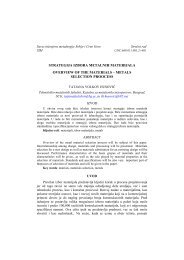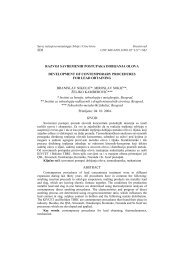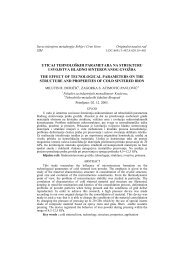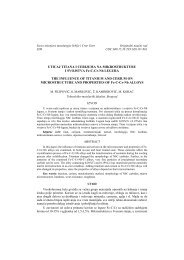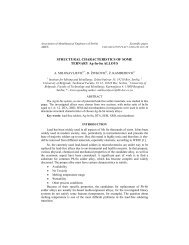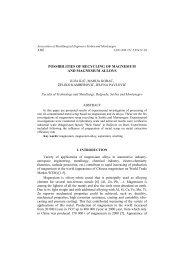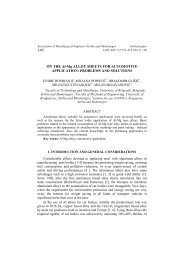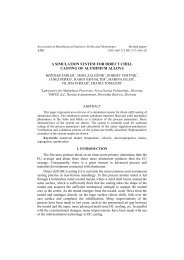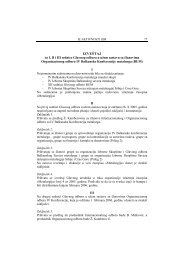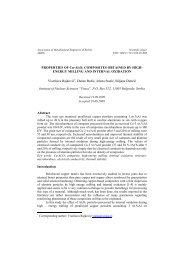THE INHIBITIVE EFFECT OF ETHANOLAMINE ON CORROSION ...
THE INHIBITIVE EFFECT OF ETHANOLAMINE ON CORROSION ...
THE INHIBITIVE EFFECT OF ETHANOLAMINE ON CORROSION ...
Create successful ePaper yourself
Turn your PDF publications into a flip-book with our unique Google optimized e-Paper software.
Jevremović et al. - The Inhibitive Effect of Ethanolamine on Corrosion... 245<br />
Electrochemical impedance spectroscopy (EIS)<br />
Electrochemical impedance spectroscopy (EIS) was used in order to study the<br />
inhibition efficiency of MEA as corrosion inhibitor for aluminium in CO 2 environment.<br />
The Nyquist impedance plots of aluminium in 3 wt. % NaCl saturated with CO 2 without<br />
and with ethanolamine added at different concentrations are shown in Fig. 3.<br />
Fig. 3. Nyquist plots of aluminium in 3 wt. % NaCl saturated with CO 2 , without and<br />
with various concentrations of ethanolamine.<br />
From the Nyquist plots it could be seen that the impedance response changes<br />
with the addition of inhibitor molecules. The existence of a single semicircle indicates<br />
the presence of simple charge- transfer process during dissolution. The EIS data shows<br />
that the presence of ethanolamine increases the values of R ct . Nyquist plots are<br />
depressed due to surface roughness, heterogeneity of the surface, or other effects that<br />
cause uneven current distributions on the electrode surface [20]. There is no evidence of<br />
the formation of a protective oxide or inhibitor film because there is just one capacitive<br />
arch in the EIS Nyquist plots but this could be due to the formation of a thin layer of<br />
inhibitor film on the aluminium surface with a resistance that is much smaller than the<br />
charge transfer resistance.<br />
The EIS data was analyzed using the electrical equivalent circuit represented in<br />
Fig. 4, where R Ω is the solution resistance, R ct is the charge-transfer resistance and CPE<br />
is the constant phase element, which represents all the frequency dependent<br />
electrochemical phenomena, namely double-layer capacitance, C dl , and diffusion<br />
processes.




